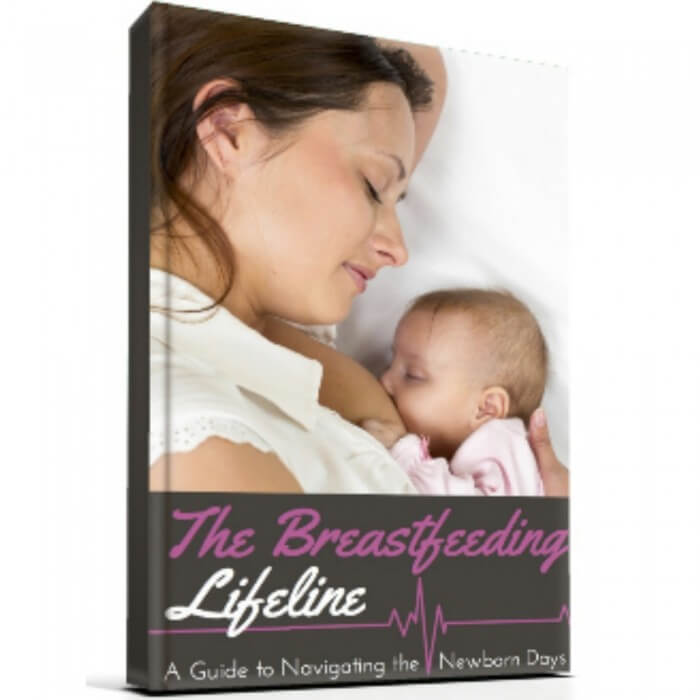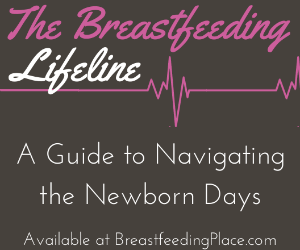 There really isn’t much about breastfeeding that you need to know to get started. Here are the basics to get you going:
There really isn’t much about breastfeeding that you need to know to get started. Here are the basics to get you going:
About Colostrum
Colostrum is your first milk and the perfect first food for your newborn. It has all the nutrients and antibodies that your baby needs to get a good, healthy start in life. You might notice that it is a pale golden yellow and rather thick.
Your body does not make a lot of colostrum at a time. Your newborn’s tiny stomach can’t handle large amounts all at the same time, so you might be nursing frequently. This will also help establish your milk supply when your regular milk comes in.
Proper Latch
Getting baby to get a good hold (latch) on your nipple and areola might be easy or it might take some work. If you give birth at a hospital, they should have a lactation specialist on hand to help you with any questions that you might have and to help you ensure that you’re getting a proper latch. Midwives and doulas also have some training in this, so they’ll be able to help also.
Don’t be afraid to ask questions, no matter how silly or stupid you might think they sound! You won’t learn if you don’t ask. There are no dumb questions.
Here are some signs of a proper latch:
- Baby should have your whole nipple and most (if not all of) your areola (it depends on the size of it) in their mouth.
- Baby’s lips should be pursed out, not tucked under. If they are tucked under, you can try pulling them out or stick your little finger in the corner of baby’s mouth to break suction and re-latch.
- You might be able to see baby’s little tongue working away under your nipple.
If you are experiencing pain while baby is latched on, break the suction first (if you don’t, it’ll hurt when you try to pull baby off), and then offer the nipple to baby again. Point it towards the back of the roof of the mouth and make sure baby’s mouth is open pretty wide.
When Your Milk Comes In
Your regular milk will come in three or four days after you give birth. You might notice that your breasts suddenly feel very full, and you may experience a lot of leaking. It’s nothing to worry about; your body will adjust pretty quickly and will slow down production (or speed it up) to match baby’s demand.
It’s very important at this stage to make sure that you nurse baby as often as baby is hungry to establish your supply. You can use nursing pads (disposable or reusable) in your bra to help absorb any leakage.
Ways to Soothe Your Breasts
Not all women experience discomfort while breastfeeding, but some do.
- Nipple soreness can be treated by rubbing lanolin ointment or specially made nipple balm into your nipples. Check to make sure it is safe for baby to ingest or if you need to wipe it off before you breastfeed. Most nipple ointments are safe for baby to ingest.
- You can also express a little of your own breast milk and rub it into your nipple.
- Ice packs or bags of frozen peas can help ease pain from engorgement (breasts being too full).
- Warm, moist compresses may help also.
If you develop a spot on your breast that becomes red and hot to the touch, and you have fever-like symptoms, get checked out by your doctor. You may have mastitis, an infection in your milk ducts. You’ll have to get antibiotics to treat it. If you have any concerns about breastfeeding, or your own health while breastfeeding, please contact your doctor.
If you feel a lump, but it’s not red and hot, it may simply be a clogged duct. Point your baby’s nose toward the lump and nurse. It should help draw the blockage out.
Accessories That Can Help
A bunch of fancy accessories are not necessary to help with breastfeeding, but there are a few that can certainly make it easier. Here are my top picks:
- nursing pillow
- nursing bra
- sling or a carrier that offers skin to skin contact and access to your breasts (so you can breastfeed while doing other things or out in public)
- nursing pads (disposable or reusable)
- nipple ointment (if needed)
That is actually it. You don’t really need a nursing bra, but they can be awfully convenient.
Are you ready?
Breastfeeding is a wonderful, intimidating experience. It does make it easier to have people there for you who have been there and done that and can offer support and advice. Don’t be afraid to reach out and ask for help (like our Facebook group)! And congratulations on deciding to research about breastfeeding.






[…] comes a time when a mom may need a little more help establishing a good milk supply. Or she may just be looking for something healthy to drink, rather than drinking water all […]